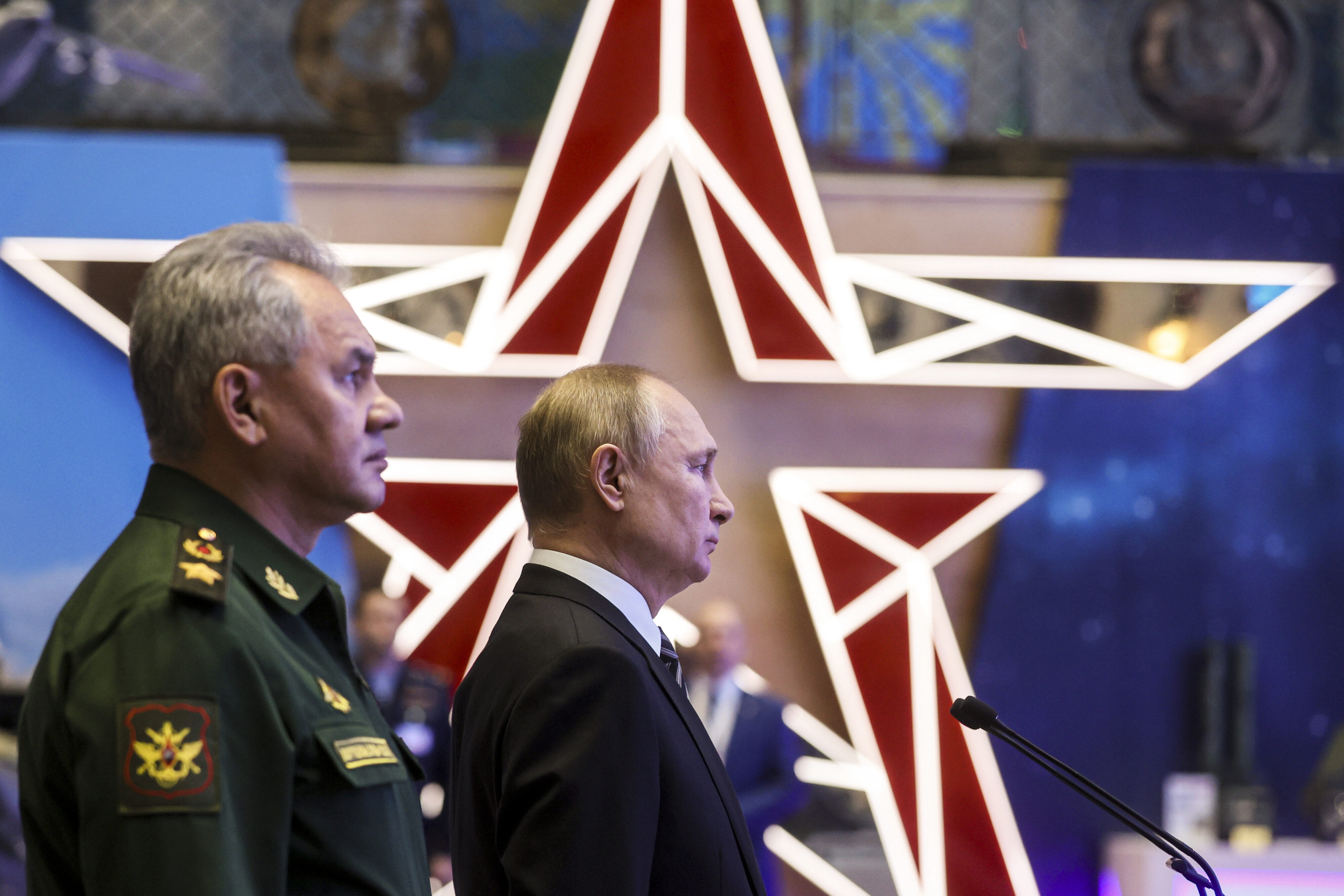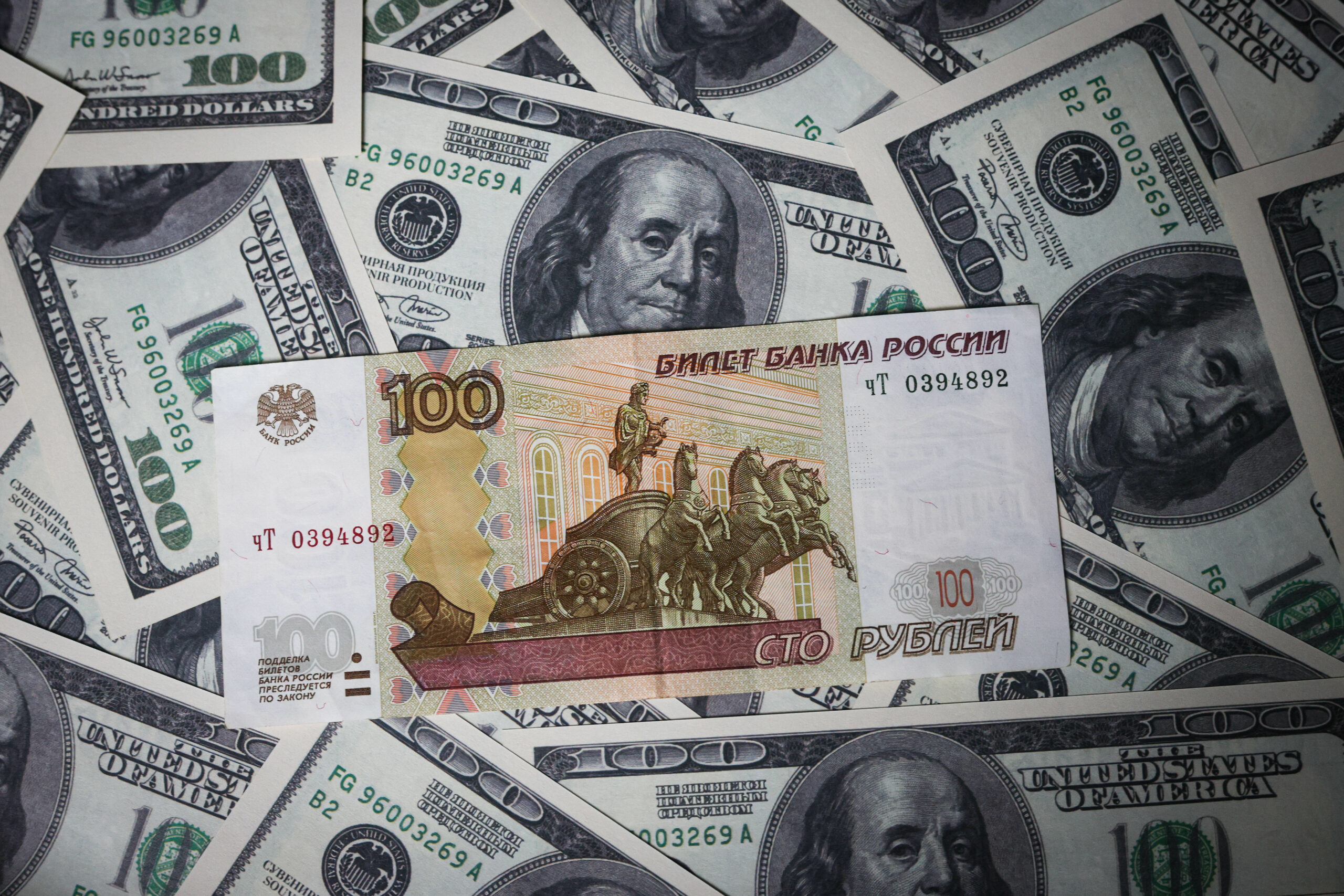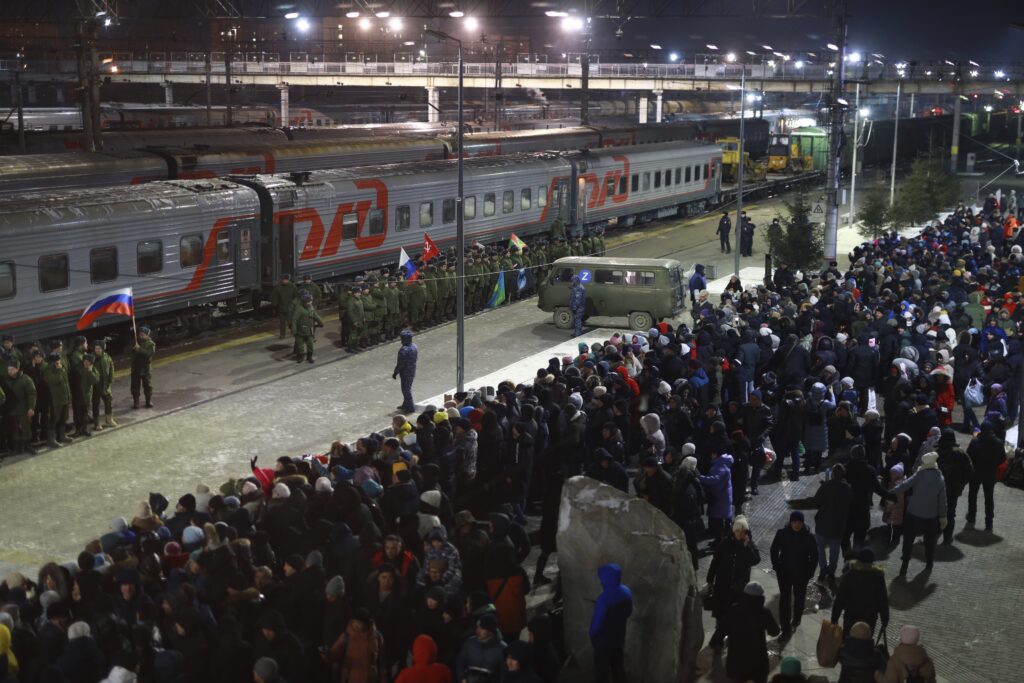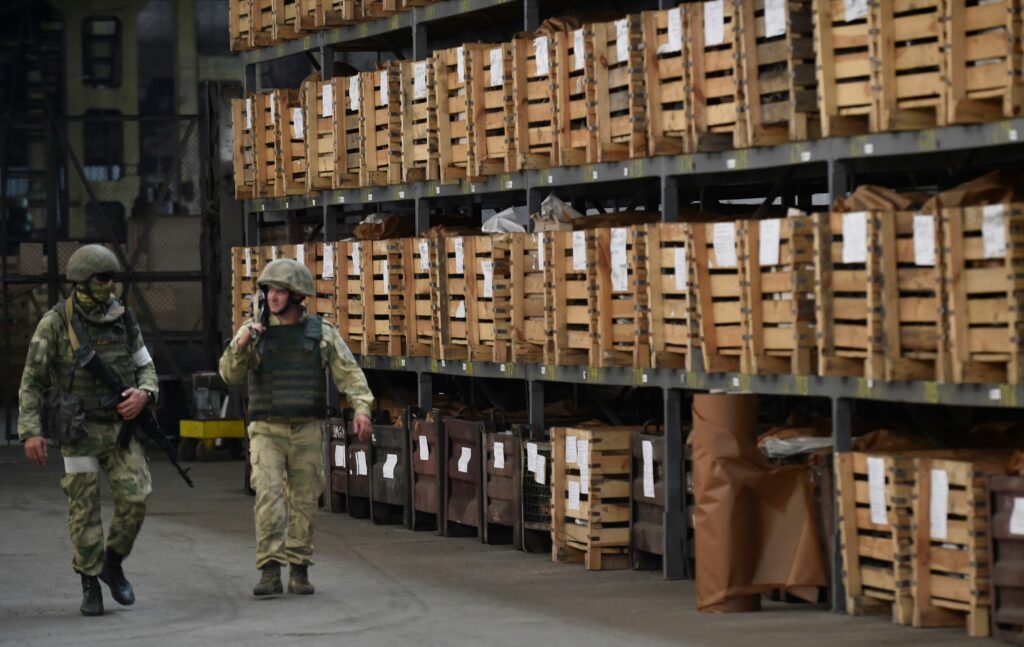2022 was a year of surprises, and most of them spelled bad news for Russia’s economic and political system. Crippling financial sanctions and export controls, however, did not spur on an economic collapse. Instead, they accelerated the transformation of Russia’s political economy. This shift will likely bring generational consequences for Eurasia as a whole — effects which will last far beyond the Russo-Ukrainian war.
The true scale of the downturn matters: a recent presentation from TsMAKP suggests Russia’s economy heading into 4Q was 7.1% smaller than 4Q 2021 seasonally-adjusted with further declines ahead. Yet what is equally important is the new system of economic management now emerging. The past ten months should dispel the widely held view that the regime had been, since 2014, building a system designed to be mobilized or put on a war-footing. Instead, the regime has struggled for almost a decade against the inertia of its intentional demobilization of the public, its preference to stoke apathy and resignation. The result is Russia in 2022’s incapacity to pursue relatively straightforward economic goals because of internal incoherence and macroeconomic policy preferences.
The ongoing economic decline seen over the course of 2022 is huge in its human costs. Real incomes have fallen over 5% for the year based on quarterly releases from Rosstat. After several years of statistical trickery and difficult circumstances amid Covid, incomes are likely now lower than levels last seen prior to the Global Financial Crisis in 2008. Around 1 in 5 people live at the poverty line and are cutting more and more spending on basics where they can. The national health system is short of at least 25,000 doctors and 50,000 nurses and supporting personnel while Russia has again joined the top-5 countries by share of new HIV/AIDS infections; prices for antibiotics and vital medications are rising as pharmacies struggle to source replacements for lost imports. Demographer Aleksei Raksha expects birth rates to fall and continue falling through 2025 as households scramble to get by. The mobilization of the economy, finally underway after fits and starts this year, intensifies many of these pre-existing problems rather than resolving them.
Ghosts of Growth Models Past
For most of the last two centuries, Russia’s growth model has been shaped by the intermittent need to catch-up to geopolitical rivals. These efforts have broadly followed a common formula: consumption of the peasantry or households is repressed to create savings that are transferred to heavy industries and the defense sector. Commodity exports — grain and energy — are taxed to stabilize the budget, the value of the ruble, and to generate foreign currency earnings that finance imports of strategic components and other vital goods. This process was described best by Alexander Gerschenkron who theorized that the comparative backwardness of the Russian economy relative to its European peers necessitated state-led industrialization to catch up and created the latent potential for rapid growth in the early stages of the process. Eventually that growth exhausts itself, while the institutional arrangements and political forces that benefited from it remain in power, resisting necessary reforms to transition towards more sustainable growth. One can trace the same general arc between Russia’s growth from 1999−2008 and the ensuing 14 years of stagnation and now decline.
Financial sanctions and export controls have upended the traditional relationship underpinning these economic relationships within Russia. Large trade surpluses no longer provide the same supply of liquid dollars and Euros that can be easily hoarded or converted to finance imports of strategically important inputs or consumer goods. Exporters are forced to convert their earnings into rubles to maintain the currency’s value and the ‘real’ value of the ruble is now more difficult to assess as the market for the currency is now effectively illiquid; no one abroad wants to hold them if it can be avoided. Despite signs of stabilization for imports, they remain lower as consumers cut spending and businesses face greater constraints sourcing imports and higher logistical costs. Historically, surges of industrial investment or «onshoring» of industrial supply chains to reduce import dependence have taken place amid conditions of strong, if uneven growth. Today the reverse is happening.
What the Bank of Russia first termed «reverse industrialization» back in April comes in conditions of weak demand. Retail turnover was down 9.7% year-on-year as of October. Though imports of refrigerators, washing machines, and other consumer goods that contain dual-use semiconductors have posted strong growth, consumer demand for repair services for appliances were up 74% year-on-year for large appliances as of October. The housing market began to collapse once mobilization was announced — demand for new-builds fell 70% between September and October alone, with real estate price declines above 10% likely in the months ahead. Assertions from officials such as economy minister Maxim Reshetnikov that the fall in consumer demand has hit bottom have repeatedly proven false. Yet economic mobilization and the creation of a new ‘garrison economy’ continue, pointing to a new (no) growth model for Russia.
Manning the Garrison
The formal mobilization of business and markets is creating conditions for what may be termed a «garrison» economy. Exports can no longer be reliably used to generate access to US dollar and Euro financing to import critical components; nor is the Russian economy structurally capable of rerouting all of the trade lost with Europe to Asia-Pacific. Most recently, the government and Russian Railways have begun discussing plans to scale back construction plans to expand export capacity along the Trans-Siberian and Baikal-Amur Mainline to reduce deficit financing. Though final decisions have yet to be made, cuts entail reductions of planned throughput capacity worth tens of millions of tons of cargo over time. Investments into ports are continuing, most unexpectedly in the Baltic, but there’s little evidence infrastructure investment is broadly keeping pace. Bank of Russia data shows the construction sector still up over 22% in annualized terms (though like comparisons are complicated by dodgy inflation data). It isn’t feeding through to exporting industries. That’s a marked change with significant consequences in the years ahead.
Exporters led by the oil & gas sector normally act as a stabilizer for the Russian economy by generating huge volumes of tax receipts, providing foreign currency earnings, generating crucial demand for domestic industries, and sustaining employment in remote regions and, in some cases, monotowns. These industries now face rising logistical costs from the exit of foreign shippers, compliance costs for foreign importers, rising costs for insurance, and more. Their cost competitiveness, generally underwritten by cheap energy, managed labor relations, and inter-sector tariff agreements, is at risk. As the likelihood of a global economic downturn rises, the price levels at which these industries become unprofitable are higher relative to peers because of the discounts applied to most major Russian exports. These dynamics are worsened in cases where buyers simply refuse to touch Russian cargoes or major markets like the EU ban imports entirely. Cuts to new infrastructure to reorient infrastructure likely reflect these realizations. Current government forecasts expect exporting sectors’ share of GDP to fall from 29.8% as of 2021 to 22.6% in 2030, a figure that understates their importance. Domestic demand is needed to offset current and impending losses, otherwise this decline will merely reflect falling living standards.
For 2022, the net increase in state spending has been driven by investment and procurement needs for the military and domestic security complex. The 2023 budget calls for a 34.4% nominal increase in defense spending (annualized inflation of 12−13%) and a 48% nominal increase in spending on security services, bringing spending to forecast levels of 5.7% of GDP. Yet over the next three years, budget spending is expected to fall from 20% of GDP to 17% of GDP, implying significant real-term cuts to state-backed capital investments and cuts to social spending. That’s a 15% cut in spending at a time when the economy can no longer rely on foreign demand to buoy output, incomes, and investment. Prime minister Mishustin has gone so far as to call on light industries and small businesses to convert their production towards the fulfillment of the military’s equipment needs, a backdoor stimulus plan that theoretically converts the surge in defense spending into a short to medium-term demand driver to prevent bankruptcies, unemployment, and collapses in real incomes that increase the public’s dependence on social transfers. The government refuses to spend money subsidizing public consumption or increasing capital investment that would increase sustainable productive capacity across the economy. What the government does not borrow or spend becomes debt or lower incomes for households, which then lead to lower profits for business and fewer resources to invest.
Over the last 9 years, austerity has forced businesses to bear hug the state in the absence of economic growth. Now the state is creating formal platforms and disciplining business to business to mobilize resources for the war effort. Rather than violence or threat, the market context makes the regime’s job easier: Russian businesses can no longer rely on foreign demand or access to foreign markets reliably. The government has had a pro-active part to play negotiating disruptions to supply chains among other things. A company now must find means to profit with what money the state is spending or perish. As long as the economy is contracting and households are spending less, pressure will rise. Real-term cuts to spending and the redirection of resources to the war effort intensify businesses’ dependence on the state to survive.
Military Austrianism
Some have called the process underway the last 10 months and the avoidance of a larger collapse in economic output military Keynesianism, but that misses the competing problems created by the turn towards wartime autarky. What makes Russia a developing garrison economy is not so much the militarization of consumption and business activity as the idea that the basics of life will go on, but without frills. Excessive caution with state spending has been deployed as a disciplinary tool across Russian society since 1999. Without tighter control over the cost of credit and circulation of money, regional interests and business lobbies could subvert state policy.
The long-standing preference for fiscal restraint has been matched by a balancing act between avoiding excessive unemployment, maintaining inefficient Soviet-era industries in remote places, and improving business efficiency. Economic policy has long disciplined labor at the expense of business by ensuring that significant amounts of slack are always present, relevant as an anti-inflation measure by limiting wage gains and a political tool to ensure the public does not become too free of its dependence on state spending and programs. The current drive to convert existing productive capacity facing a demand shock linked to sanctions, falling energy export earnings, and a commodities downturn is still designed in such a way as to maintain this slack. Put bluntly, the regime is happy to intentionally run the economy far below its actual productive capacity because of its political reliance on pensioners who lived on fixed incomes and need to maintain its power to discipline labor and business alike. By implication, this means that attempts to «mobilize» the economy are not intended to do so in the manner most efficient for maximizing production and minimizing the real-terms shock to the economy affecting the military. This is not a Keynesian race to increase aggregate output or a fascist policy employing everyone maximally in support of a shared ideology and mass war. It’s a redirection of resources away from households and sustainable, productive sectors towards purposes that are more easily politically controlled by the regime and its institutional structures. After all, if every able person was employed maximally, then conscription would be much more of a political problem. Going on strike or withdrawing one’s labor would have more significance.
Thus Russia’s garrison economy is the transformation of a system from one where natural resource and commodity exporters underwrite a national industrial base and fiscal system to an increasingly Spartan system chiefly driven by state generated internal demands. Resources are now being directly taken away from more productive uses that could better serve the war effort and instead deployed in selective, austere fashion to ensure the regime’s survival. Late Putinism is turning to military Austrian economics in conditions that make any fiscal expansion — a necessary precondition for a large increase in industrial investment in conditions of uncertainty — inflationary and politically unpalatable. Better to wage war badly than risk political turmoil.










